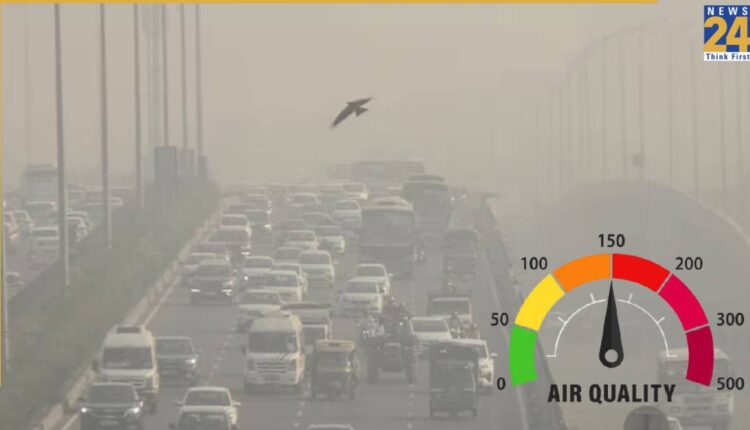Indian cities top global pollution list; Punjab, Haryana among worst hit, Mumbai And Kolkata outside top 10 – see full AQI rankings News24 –
Air Quality Index continues to stay in the red zone as the combination of pollution, fog, and low wind speeds leads to persistent haze in Delhi, NCR, and other regions. According to the Air Quality Index (AQI) measured at 2:30 pm on November 2, 2025, all 25 of the world’s most polluted cities were located in India—a concerning development for citizens who may face prolonged health issues due to exposure to high levels of pollution. While Delhi is often considered the epicenter of pollution in overall rankings, the city has dropped out of the top 10, with several other cities showcasing even higher AQI levels.
Delhi’s Air Quality Plunges to ‘Severe’ on Sunday
Delhi’s air quality deteriorated sharply on Sunday, slipping into the ‘severe’ category due to fog and low wind speeds that trapped pollutants, the Central Pollution Control Board (CPCB) reported. Several areas recorded AQI levels above 400, with Wazirpur in North Delhi and RK Puram in South Delhi registering 432 and 425, respectively.
At 7 a.m., the citywide AQI stood at 377, up from 233 on Saturday and 218 on Friday. Areas such as Burari (412), Bawana (413), Dwarka Sector-8 (407), Chandni Chowk (414), and Rohini (415) also fell into the ‘severe’ range. Only NSIT Dwarka (254), IHBAS, Dilshad Garden (270), and Delhi Technological University (292) recorded ‘poor’ air quality levels.
Delhi’s Safdarjung weather station reported a visibility of 900 meters with calm winds, while Palam recorded 1,300 meters with winds at 4 kmph. On Saturday night, the AQI had dropped to 303 (‘very poor’). The India Meteorological Department (IMD) forecast shallow fog for Sunday morning, with temperatures ranging between 18°C and 31°C and humidity at 73%.
How Temperature Decline Leads to Smog
Changing weather patterns often trap pollutants close to the surface as temperatures decline. The situation is further worsened when wind speeds are low. Burning residue from agricultural practices and debris from construction sites intensifies the problem.
Stubble burning has, over time, been a major contributor to overall pollution. The pollution from stubble burning often drifts into neighboring states such as UP, Punjab, and Haryana, affecting nearby cities. Additionally, transport vehicles further add to the pollution load, which the government has been planning to reduce with schemes like GRAP 2.
Industrial air pollution is another significant contributor to overall pollution levels.
Air pollution can lead to intensified health issues. It is therefore advised to reduce outdoor activities and wear a mask to minimize exposure to harmful pollutants in the air.

